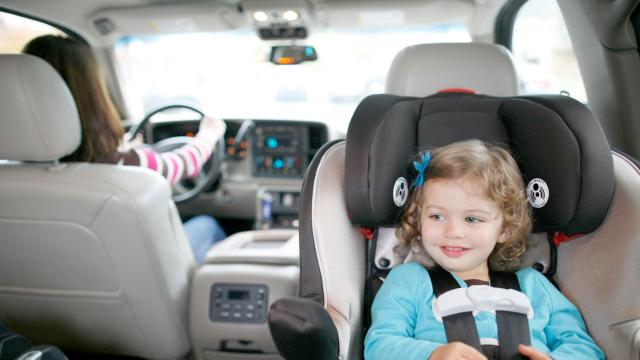The American Academy of Paediatrics has previously recommended that “Children should ride in a rear-facing car seat for as long as possible, up to the limits of their car safety seat.”
This is an update to the group’s previous recommendation that kids should be in rear-facing seats until at least age two. It makes things a little tricky as every car seat is different and you’ll have have to look up the specific weight and height requirements issued by your manufacturer. However, you can know that your kid’s second birthday is very likely not the time to turn your seat forward. As the AAP notes, those who should ride in rear-facing seats include “virtually all children under 2 and most children up to age 4.”
I just checked my own car seat manual. Under the new recommendation, kids using our seat, the Diono Radian R120, should ride rear-facing as long as they weigh less than 20kg and their heads are below one-and-a-half inches from the top of the seat. My daughter is taller than that, but just barely, and she’s five-and-a-half.
The rear-facing weight restrictions of other popular car seat models:
Graco Extend2Fit Convertible Car Seat: 23kg
Britax Boulevard ClickTight Convertible Car Seat: 18kg
Britax Marathon ClickTight Convertible Car Seat: 18kg
Maxi-COSI Pria 85: 18kg
Evenflo SafeMax Platinum All-in-One Convertible Car Seat: 18kg
Chicco NextFit Convertible Car Seat: 18kg
The recommendations are constantly evolving based on new research and safety testing. And studies continue to show that rear-facing is safer. As explained by Consumer Reports, a rear-facing seat “spreads the crash force more evenly across the back of the car seat and the child’s body.” It also “limits the motion of the head, reducing the potential for neck injury, and keeps the child more contained within the shell of the child restraint.”
Some parents may protest the recommendation, thinking perhaps that kids start to hate sitting rear-facing after toddlerhood or that their legs are way too long to be in that position. However, children really don’t mind facing the back if they don’t know any differently (and it’s for their safety, after all), and their legs are just fine. They can rest them on the seat, cross them or hang them over the sides — however they feel most comfortable.
Also, “scrunched” legs are a relatively insignificant risk when compared to spinal cord injuries.
The bottom line: Wait for as long as possible to turn your kid’s seat forward. Explains the AAP: “In most families, milestones and transitions are viewed in a positive light. Child passenger safety is one of the few areas where the next step is not ‘positive’ and where delaying transitions is best practice.”

Comments